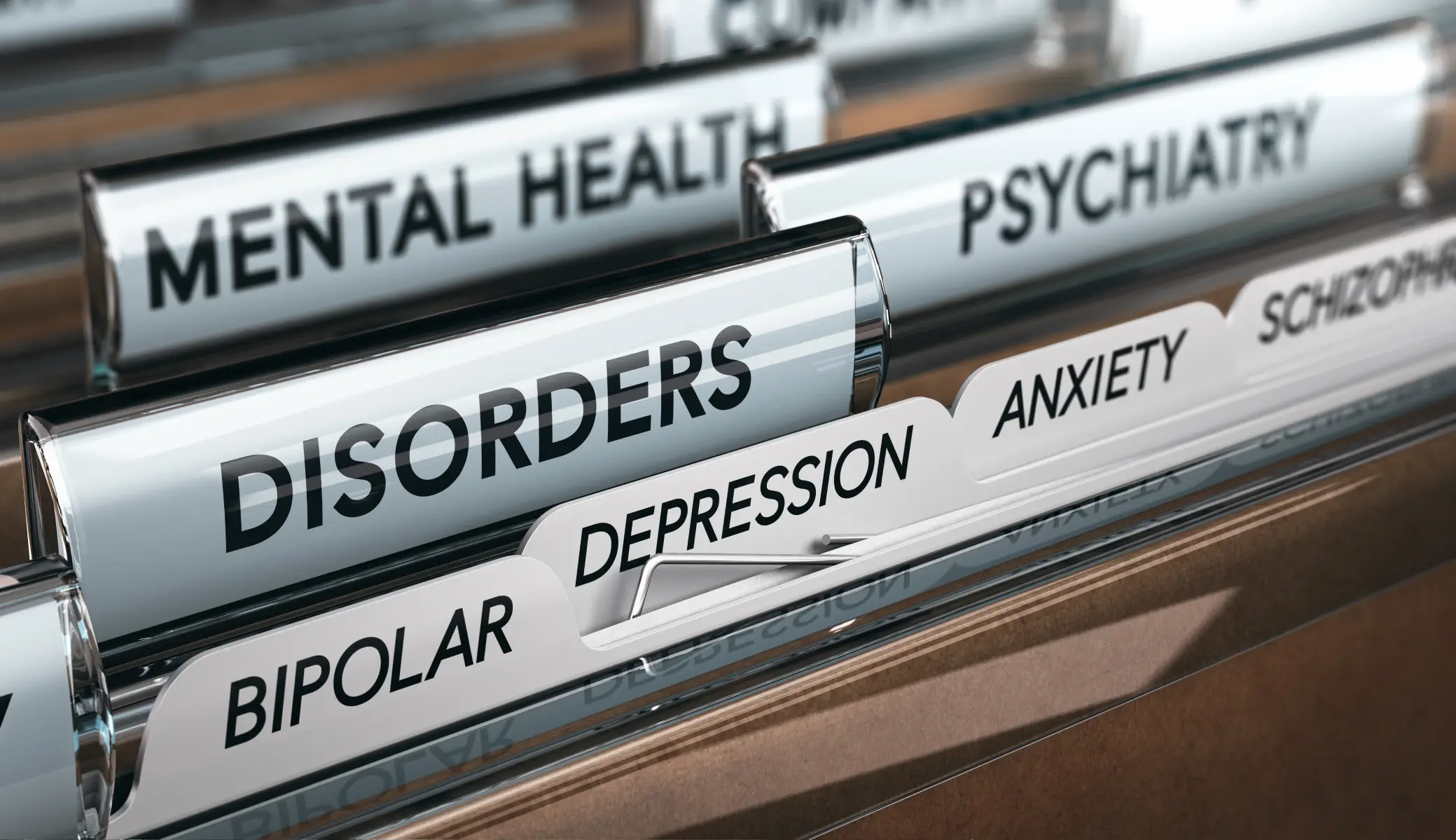Introduction to PTSD
Post-Traumatic Stress Disorder (PTSD) is a mental health condition that can develop after a person experiences or witnesses a traumatic event. These events could include experiences such as military combat, physical or sexual assault, natural disasters, serious accidents, or even prolonged emotional abuse. PTSD is a complex and often misunderstood condition that goes beyond the initial emotional responses to trauma. Instead of the stress diminishing over time, people with PTSD may feel trapped, reliving the trauma in ways that disrupt their daily lives and mental health.
In recent years, awareness around PTSD and its effects has grown, but misconceptions remain. It’s essential to understand that PTSD isn’t a sign of weakness or something a person can “just get over.” It’s a recognised mental health condition that requires compassion, understanding, and appropriate treatment to manage effectively.
This whitepaper explores the symptoms, diagnosis criteria, and treatment options for PTSD. By understanding trauma and its long-lasting effects, we can help those affected and provide essential mental health support for trauma survivors.
Common PTSD Symptoms
PTSD symptoms go far beyond recalling a difficult memory. They are often intrusive and affect the mind and body in profound ways. While the symptoms vary between individuals, PTSD is typically associated with four main categories of experiences:
1. Intrusive Thoughts and Flashbacks
Intrusive symptoms are among the most common and disruptive aspects of PTSD. These include:
- Flashbacks: Feeling as though the traumatic event is happening again. A person may relive the sights, sounds, and emotions of the event vividly.
- Nightmares: Recurrent dreams related to the trauma, often leaving individuals distressed.
- Disturbing Memories: Unwanted thoughts or images of the trauma that seem impossible to ignore.
These intrusive episodes can be triggered by everyday events or appear without warning.
2. Avoidance Behaviours
People with PTSD often go to great lengths to avoid situations, people, or places connected to the traumatic event. This might involve:
- Emotional Avoidance: Suppressing thoughts and feelings about the trauma or disengaging from conversations about what happened.
- Physical Avoidance: Steering clear of places, objects, or activities that remind them of what occurred.
While avoidance seems helpful in the short term, it often prevents emotional healing and results in deeper isolation.
3. Negative Changes in Mood and Cognition
Trauma can alter how an individual interprets the world and interacts with others. Some common changes include:
- Persistent feelings of fear, guilt, or shame.
- Loss of interest in previously enjoyed activities.
- Difficulty remembering parts of the traumatic event.
- Distorted beliefs, such as “I can’t trust anyone” or “It was all my fault.”
These cognitive shifts often make relationships and daily functioning more difficult.
4. Heightened Arousal and Emotional Reactivity
PTSD causes people to remain on high alert as though they are constantly in danger. This hyperarousal can manifest as:
- Irritability or Anger: Heightened emotional responses to small frustrations.
- Hypervigilance: Being overly aware of surroundings, often scanning for potential threats.
- Difficulty Sleeping: Insomnia or restless nights due to heightened anxiety.
- Exaggerated Startle Response: Intense reactions to sudden sounds or movements.
This increased state of arousal is exhausting and can severely disrupt daily life.
It’s important to note that PTSD symptoms must persist for at least one month and significantly impact an individual’s ability to function before a diagnosis is considered.
PTSD Diagnosis Criteria
Diagnosis of PTSD must meet specific criteria outlined in the Diagnostic and Statistical Manual of Mental Disorders (DSM-5). Healthcare professionals such as psychiatrists or psychologists typically assess this through detailed interviews, questionnaires, or structured screening tools.
1. Trauma Exposure
The person must have experienced or witnessed a traumatic event involving actual or threatened death, serious injury, or sexual violation. This includes:
- Being directly impacted by the event.
- Witnessing the traumatic event in person.
- Learning that a traumatic event happened to a close family member or friend.
2. Presence of Specific Symptoms
To meet the criteria for PTSD, symptoms from the four categories (intrusion, avoidance, negative mood, and hyperarousal) must be present for over a month.
3. Impairment in Daily Life
The symptoms must cause significant distress or impairment in important areas of life, such as work, school, or relationships.
4. Exclusion of Other Conditions
PTSD must be differentiated from other mental health disorders, such as depression, anxiety, or substance abuse, which may have overlapping symptoms. A thorough evaluation ensures that a proper diagnosis is made.
If you or someone you know is experiencing symptoms of PTSD, seeking help from a mental health professional is crucial. Early diagnosis can lead to better outcomes and more effective treatment.
Treatment Options
PTSD treatment focuses on helping individuals regain control over their symptoms, reduce distress, and rebuild their quality of life. While there is no “one-size-fits-all” solution, several evidence-based treatments are effective in managing PTSD.
1. Psychotherapy (Talking Therapy)
Therapy is one of the most effective approaches to treating PTSD. Common methods include:
- Trauma-Focused Cognitive Behavioural Therapy (TF-CBT): A type of CBT that helps individuals reframe harmful thinking patterns related to their trauma and develop healthier coping skills.
- Eye Movement Desensitisation and Reprocessing (EMDR): A structured approach where individuals process traumatic memories through guided eye movements, helping to reduce the emotional impact of past events.
- Psychodynamic Therapy: Focuses on uncovering and resolving unconscious conflicts related to the traumatic experience.
Therapy provides emotional safety and tools for individuals to address their trauma in manageable ways.
2. Medications
In some cases, medication is prescribed to help manage PTSD symptoms, such as anxiety or depression. Common options include:
- Selective Serotonin Reuptake Inhibitors (SSRIs): These antidepressants, such as sertraline or paroxetine, are FDA-approved for PTSD treatment.
- Anti-Anxiety Medication: Used to alleviate traumatic stress during severe episodes (typically short-term).
Medications should be used in conjunction with therapy for the best outcomes.
3. Lifestyle Adjustments and Self-Care
Holistic approaches to managing PTSD symptoms include:
- Mindfulness Practices: Meditation and breathing exercises help reduce anxiety and increase emotional grounding.
- Regular Exercise: Physical activity releases endorphins that can naturally reduce stress.
- Healthy Routines: Consistent sleep, balanced nutrition, and avoidance of drugs or alcohol can support emotional stability.
- Journaling: Writing about emotions provides an outlet for processing memories and reflecting on progress.
4. Support Groups
Connecting with others who’ve experienced similar traumas can help individuals feel less isolated. Peer support groups offer a safe space to share experiences and gain insights from others’ journeys.
5. Crisis Intervention
In severe cases where PTSD symptoms lead to suicidal thoughts or behaviours, immediate crisis intervention is critical. In the UK, organisations such as Mind, Samaritans, and Combat Stress provide 24/7 support for those in urgent need.
Conclusion
PTSD is a deeply impactful mental health condition, but it’s important to remember that recovery is possible with the right combination of treatment, support, and self-care. By understanding the symptoms and seeking mental health support for trauma, individuals can move towards healing, restoring emotional balance, and regaining control over their lives.
Whether through psychotherapeutic approaches like CBT or EMDR, medications, or lifestyle changes, effective treatment for PTSD is available. Friends and family also play a vital role in providing a supportive environment that fosters recovery. Most importantly, addressing PTSD takes time, but each step forward—no matter how small—is progress on the path to healing.
If you or someone you know is struggling with PTSD, reach out to a mental health professional. Early intervention can make all the difference in overcoming trauma and building a healthier, happier future.










